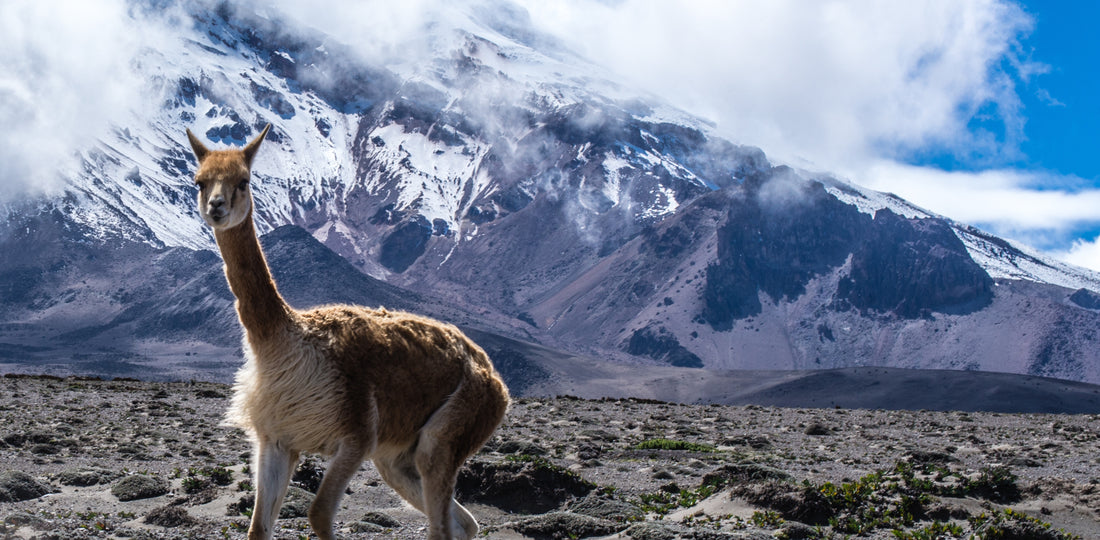
The History of Alpaca: From the Andes Mountains to Global Luxury
Share
The alpaca, a native animal of the Andes, has been a fundamental part of Andean communities for thousands of years. Its wool, known for its softness, warmth, and durability, has been highly valued by various cultures over time.
The Origin of Alpaca in Andean Civilizations
Alpacas were domesticated by pre-Columbian civilizations in South America, primarily in what is now Peru, Bolivia, and Chile, over 6,000 years ago. Andean peoples, like the Incas, developed a deep respect for these animals, considering them sacred for their contribution to both daily life and rituals. Alpaca wool, known as "the fiber of the gods," was used by Inca nobility to craft garments and textiles of great symbolic value.

During the Inca Empire, alpaca wool was so prized that it was reserved for the elite and royalty. Inca artisans created mantles, tunics, and other textiles with intricate designs that not only represented the social status of the wearer but were also used in religious ceremonies and offerings to the gods.
The Fall of the Inca Empire and the Decline of the Alpaca Industry
The arrival of Spanish conquistadors in the 16th century marked a turning point in alpaca history. During colonization, the Spanish introduced sheep and other species that began to replace alpacas as a source of wool. The Andean textile production based on alpaca wool was marginalized, and for several centuries, this precious fiber was nearly forgotten outside indigenous communities.
However, Andean communities continued breeding alpacas and preserving the textile-making tradition, passing down knowledge from generation to generation.

The Renaissance of Alpaca Wool in the 19th Century
In the 19th century, alpaca began to regain its prestige outside South America. The Western world rediscovered alpaca wool through the interest of traders and explorers who were amazed by its unique properties. Alpaca fabric stood out in Europe for being lighter and warmer than sheep’s wool and for its natural sheen that enhanced its beauty.
The growing European demand led Andean producers to increase alpaca breeding and refine wool processing, once again positioning alpaca fiber as a valuable resource.
 Today, alpaca wool products have reached luxury status in global fashion. High fashion designers and the most exclusive brands have incorporated this fiber into their collections, highlighting not only its softness and elegance but also its ecological and sustainable nature.
Today, alpaca wool products have reached luxury status in global fashion. High fashion designers and the most exclusive brands have incorporated this fiber into their collections, highlighting not only its softness and elegance but also its ecological and sustainable nature.The renaissance of alpaca in international fashion is driven by several factors:
- Superior Quality: Alpaca wool, especially in its finer varieties like baby alpaca and royal alpaca, is incredibly soft, warm, and durable, making it an ideal choice for high-end products.
- Sustainability: As the fashion world shifts towards more sustainable practices, alpaca has gained popularity due to its low environmental impact. Alpacas have gentle grazing habits that do not erode the soil, consume less water than other grazing animals, and their wool is fully biodegradable.
- Exclusivity: Alpaca wool production is limited compared to other fibers, adding a touch of exclusivity to every garment made from it.
Alpaca Products in the World of Luxury
Currently, alpaca products are symbols of elegance and exclusivity. Scarves, blankets, sweaters, shawls, and coats made from alpaca wool are among the most coveted pieces in the luxury market. Designers value the versatility and natural beauty of this fiber, creating garments that not only stand out for their aesthetics but also for their durability and comfort.
Additionally, conscious consumers appreciate that by choosing alpaca products, they support fair trade practices that benefit the Andean producer communities.
Alpaca: A Living Legacy of the Andes
Throughout history, alpaca has been much more than a simple grazing animal. It has been a symbol of cultural connection and sustainability for Andean communities, and today, its legacy extends worldwide. Alpaca wool products, which once adorned Inca royalty, now represent luxury, tradition, and ecological consciousness in contemporary fashion.
By acquiring an alpaca garment, one not only enjoys the incomparable softness and warmth of this fiber but also contributes to preserving a millennial cultural heritage. The alpaca has traveled a long journey, from the heights of the Andes to the fashion runways, and its history continues to fascinate and captivate those who appreciate true quality and craftsmanship.




